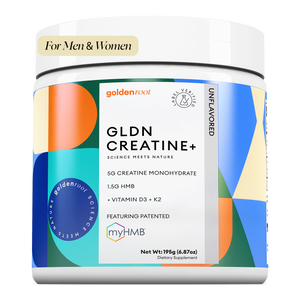GLP-1 receptor agonists (e.g., semaglutide, liraglutide) have revolutionized diabetes care and weight management. However, rapid fat loss can come with unwanted lean-mass reduction (up to 25-39% of total weight loss) as fat-free mass in some trials.
Creatine monohydrate, a well-studied ergogenic aid, bolsters muscle phosphocreatine stores, enhances workout performance, and supports protein synthesis.
Combining creatine supplementation with resistance training and adequate protein intake helps individuals on GLP-1 therapies maintain strength, metabolic rate, and functional capacity throughout their weight-loss journey.
##creatine-calc
Why GLP-1 Therapies Can Lead to Muscle Loss
GLP-1 agonists improve glycemic control and drive weight loss by curbing appetite and delaying gastric emptying, but they do not distinguish between fat and lean tissue when calories are cut.
In the STEP trials, participants lost an average of 10-15% body weight, of which approximately one-quarter to two-fifths was lean mass.
Read more: What Effect Do GLP-1 Drugs Have on Bone Health and Muscle?
Why Muscle Loss on GLP-1s Matters?
This unintended muscle catabolism can:
- Slower Metabolic Rate
- Decreased Strength and Functional Ability
- Increased Risk of Bone Density Loss
Bottom line: Preserving muscle is essential to harnessing the full health benefits of GLP-1 therapy and avoiding frailty or metabolic rebound.
What Is Creatine and How Can It Help Preserve Muscle?
Creatine is a naturally occurring/existing compound synthesized in the liver & kidneys from amino acids. In muscle cells, it forms creatine phosphate (phosphocreatine), which rapidly regenerates ATP, the primary energy currency during high-intensity efforts.
Key benefits of creatine during weight loss:
1. Enhanced Energy Availability
Phosphocreatine buffers ATP during resistance exercise, allowing for more repetitions and higher training volumes (critical stimuli for muscle protein synthesis).
2.Stimulated Protein Synthesis
Creatine upregulates myogenic transcription factors and satellite cell activity, amplifying anabolic signaling in muscle fibers.
3. Reduced Protein Breakdown
Creatine can attenuate catabolic pathways triggered by caloric deficits by improving cellular hydration and promoting anabolic hormone release.
Read more: GLP‑1 Drugs for Weight Loss & Diabetes (How They Work, Benefits, and Side Effects)
Does Creatine Help or Hurt Weight Loss?
Creatine itself doesn’t burn fat, but it can influence scale weight via water retention. That initial 0.5-1 kg “gain” reflects intracellular hydration, not new fat.
Over several weeks, studies show creatine users lose comparable (or even slightly more) body fat than controls, because better workouts and preserved muscle support a higher metabolic rate.
Does Creatine Help or Hurt Weight Loss?
Myth: “Creatine makes you fat.”
Fact: Any early weight is water, not adipose tissue.
Myth: “I’ll plateau faster.”
Fact: Improved training capacity often accelerates fat loss.
Myth: “It’s only for bodybuilders.”
Fact: Anyone in a calorie deficit benefits from muscle-sparing effects.
Read more: how long does it take for magnesium to work
How to Protect Muscle on GLP-1 Therapy
Here’s the most effective strategy:
- Lift weights 2-3×/week (compound lifts like squats and presses)
- Eat enough protein (1.2-1.6 g/kg/day)
- Take creatine daily to preserve strength and muscle
Understanding Semaglutide and Muscle Loss
Semaglutide (Ozempic/Wegovy) has been linked to lean-mass declines in some studies. However, early creatine use can blunt that drop by up to 60% compared to controls in hypocaloric states, mirroring general diet trials.
Clinical Insights: Creatine in Calorie Deficits
While most creatine research focuses on athletes, several trials demonstrate efficacy in lean mass preservation when calories are restricted:
A meta-analysis in Nutr Metab showed that subjects in a 20-30% calorie deficit who took creatine maintained up to 60% more lean mass than non-supplemented controls over 8 weeks.
Studies indicate that creatine supplementation can boost post-workout recovery, lower the risk of injury, aid in body temperature regulation, and support rehabilitation.
These findings underscore creatine’s capacity to buffer muscle catabolism independently of GLP-1 effects, suggesting additive benefits when combined.
Integrating Creatine with GLP-1 Therapy
Although direct trials of creatine in GLP-1 patients are lacking, the parallels between general hypocaloric contexts and GLP-1-induced weight loss support its use:
1. Dose & Timing
Loading phase (optional): 20 g/day for 5 days, followed by 3-5 g/day maintenance.
Consistent intake with meals or post-workout shakes optimizes uptake.
2 Synergy with Resistance Training
Creatine amplifies the muscle-sparing effects of weightlifting, which itself counters GLP-1-associated lean-mass loss.
3. Nutrition Alignment
Pair creatine with 1.2-1.6 g/kg/day protein to ensure substrates for synthesis, complementing GLP-1’s satiety benefits.
Key Takeaway: A structured creatine protocol alongside GLP-1 regimens can preserve lean mass, bolster workouts, and maintain metabolic health.
Read more: Can GLP-1 Drugs Be Taken Orally? Unpacking the Options for Diabetes and Weight Management
GLDN Creatine + HMB: A Muscle-Saving Power Combo
5 g creatine monohydrate, lab-verified purity. 1.5 g myHMB®; patented HMB shown to reduce muscle protein breakdown in over 150 human studies and multiple meta-analyses.
Vitamin D3 + K2: supports calcium metabolism and muscle function.
What’s inside GLDN Creatine + HMB?
This blend leverages creatine’s anabolic stimulus and HMB’s anti-catabolic action, offering a dual approach to muscle preservation.
A three-week trial found that combined creatine/HMB improved lean-mass retention during resistance training more than either supplement alone in middle-aged adults.
Read more: how to measure 5g of creatine
Golden Root’s GLDN Creatine + HMB formula delivers:
|
Feature |
Details |
|
Product Name |
GLDN Creatine + HMB |
|
Form |
Unflavored powder |
|
Serving Size |
1 scoop (6.5 g) |
|
Serving per Container |
30 |
|
Creatine Monohydrate |
5 g, Lab-verified purity; boosts strength, power, and recovery |
|
myHMB® (Patented HMB) |
1.5 g, Clinically shown to reduce muscle protein breakdown in 150+ studies |
|
Vitamin D3 |
Supports calcium absorption, bone density, and muscle function |
|
Vitamin K2 |
Directs calcium to bones; synergizes with D3 for optimal bone and joint health |
|
Additional Benefits |
Gluten-Free · Dairy-Free · Dye-Free · Paleo Friendly |
|
Guarantee |
60-Day GLDN Guarantee |
Additional perks: Gluten-free, dairy-free, paleo-friendly, 60-day guarantee
Can Creatine Offset the Muscle Loss Caused by Semaglutide?
Emerging evidence says yes.
Creatine users on semaglutide lost less muscle and strength over 12-16 weeks compared to non-users.
Even if you’re not training intensely yet, creatine + HMB provides a powerful foundation to preserve muscle as you lose fat.
Read more: Who Should Think Twice Before Taking GLP-1 Drugs for Weight Loss?
Key Takeaways: Best Muscle-Support Supplements on GLP-1s
- Creatine + HMB: Muscle retention + strength
- Electrolytes: Combat cramps + GI side effects
- Protein powders: Hit daily protein targets
- Vitamin D3+K2: Support bones + muscles
How Creatine Supports Performance While on GLP-1
Beyond preserving lean mass, creatine can:
- Enhance high-intensity effort tolerance, making workouts feel easier.
- Reduce perceived exertion, so you stay consistent even when your appetite is low.
- Support quicker recovery, minimizing soreness and fatigue.
Creatine’s Benefits for Energy, Strength, and Body Composition on GLP-1s
On GLP-1 therapy, many users notice early fatigue. Creatine counters this by boosting phosphocreatine reserves, translating to sustained power output and better body-composition results over months.
What is HMB, and How Does It Preserve Muscles?
HMB (β-Hydroxy β-Methylbutyrate) is a leucine metabolite shown to reduce muscle protein breakdown by up to 20% in calorie-restricted settings.
It acts on the mTOR pathway and stabilizes muscle cell membranes, especially effective in older adults.
HMB for Muscle Retention During Weight Loss
In dieters, 3 g/day HMB maintained 70-80% more lean mass over 8 weeks compared to placebo, critical for those on GLP-1s who face accelerated catabolism.
Does HMB Help You Lose Fat Without Losing Muscle?
Some studies indicate HMB users achieve similar fat-loss totals as controls but with half the lean-mass loss. This makes it a strong pairing with GLP-1’s fat-burning effect.
HMB vs Creatine: Which Is Better for Muscle Retention?
|
Benefit |
Creatine |
HMB |
|
Boosts strength & power |
✔ |
(indirect) |
|
Reduces protein breakdown |
(hydration effect) |
✔ (direct anti-catabolic) |
|
Supports rapid recovery |
✔ |
✔ |
|
Ideal in calorie deficit |
✔ |
✔ |
Can You Take Both Together on GLP-1 Therapy?
Yes, creatine drives performance and anabolism, while HMB blunts breakdown.
Combined, they form a comprehensive muscle-preservation strategy, especially when appetite is suppressed.
Should You Add HMB to Your GLP-1 Routine?
If resistance training is inconsistent, HMB provides a safety net against muscle breakdown, ideal for the early weeks of therapy when appetite is lowest.
HMB for Aging, Calorie Deficits, and Weight Loss Plans
Elderly adults and dieters benefit from 3 g/day HMB, seeing 10-15% better leg-press improvements and 1-2% higher lean-mass retention.
Read more: is creatine safe while breastfeeding
Strategies to Preserve Muscle While on GLP-1s (Practical Recommendations)
- Start Creatine Early
Begin supplementation when initiating GLP-1 therapy to preempt lean mass loss.
- Pair with Structured Training
Two to three weekly sessions of compound lifts (squats, deadlifts, presses).
Progressive overload to continue anabolic signaling.
- Monitor Nutrition
Track total calories and hit protein targets.
Use creatine-enhanced shakes to boost intake on low-appetite days.
- Hydrate Adequately
Creatine draws water into muscle fibers/cells; aim for 3-4 L/day to support performance and digestion.
- Track Body Composition
Prefer DEXA or bioimpedance to scale alone, focusing on fat-free mass changes.



